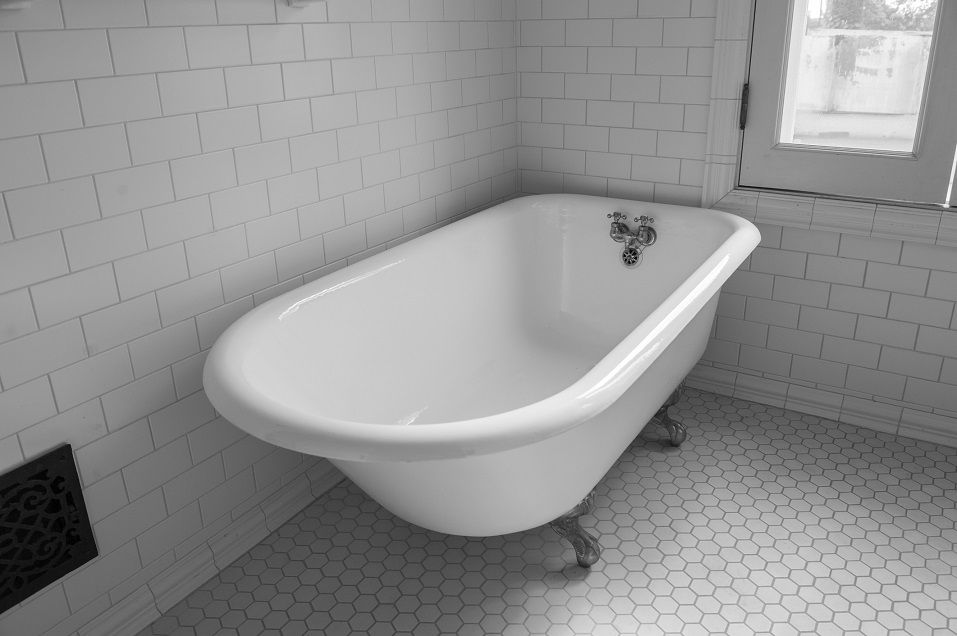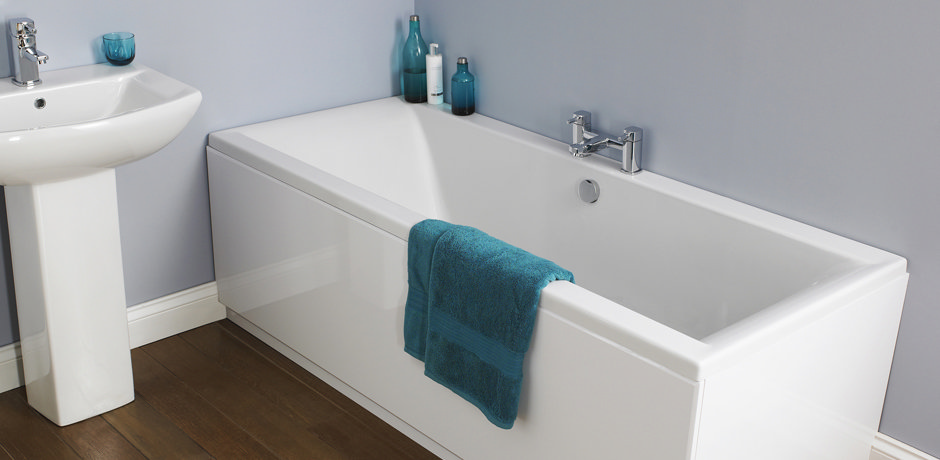Are you currently looking for information and facts on How to Install a Bathtub?

Mounting a tub isn't exactly rocket science, however it does need solid plumbing, woodworking, as well as occasionally, tiling skills. Changing an old bath tub with a new one is likewise a reasonably difficult task. If the old tub is easily easily accessible, the project can move quickly; if you need to open a wall surface to eliminate the old tub as well as position the brand-new bath tub, the job is a lot harder. In either case, the project is within a home handyman's abilities, although you will require a helper to leave the old tub as well as embeded in the brand-new one. See to it you have certified yourself for the task and also fit trying it. Rather than employing a service provider to take control of a halfway-completed task, it is better to consider employing one prior to you start. Opportunities are you might need an expert plumber to make tube connections.
This post will assist you mount a new tub in your bathroom if you have currently bought a new tub and also don't need to transform the arrangement of your previous supply of water pipelines.
Your tools and product checklist should consist of the following:
Removing Old Taps
If you require to replace old faucets with new ones as a part of your installation, after that the first thing you ought to do is detach the water. After doing so, activate the faucets to drain any type of water remaining in the system. The procedure of eliminating the existing taps can be rather troublesome because of the limited gain access to that is frequently the case.
Use a container wrench (crowsfoot spanner) or a tap device to reverse the nut that attaches the supply pipes to the faucets. Have a fabric ready for the continuing to be water that will certainly come from the pipelines. When the supply pipes have been removed, use the same tool to loosen the nut that holds the taps onto the bath/basin. You will need to stop the single faucets from turning during this process. Once the taps have been eliminated, the holes in the bath/basin will need to be cleaned up of any type of old sealing substance.
Before carrying on to fit the new faucets, compare the pipeline connections on the old faucets to the new faucets. If the old taps are longer than the new faucets, then a shank adapter is needed for the new taps to fit.
Suitable New Taps
If the tails of the new faucets are plastic, after that you will require a plastic connector to avoid damages to the string. One end of the adapter fits on the plastic tail of the tap and also the various other end offers a link to the current supply pipes.
If you need to fit a monobloc, after that you will certainly need reducing couplers, which attaches the 10mm pipe of the monobloc to the typical 15mm supply pipe.
Next, position the tap in the installing hole in the bath/basin guaranteeing that the washers remain in place in between the tap and the sink. Safeguard the tap in place with the manufacturer supplied backnut. Once the tap is safely in place, the supply pipes can be attached to the tails of the faucets. The faucets can either be attached by utilizing corrugated copper piping or with regular tap adapters. The previous kind ought to be linked to the tap ends first, tightening only by hand. The supply pipes can later be attached to the various other end. Tighten up both ends with a spanner after both ends have actually been linked.
Mounting the Tub
Utilizing both wood boards under its feet, put the tub in the required setting. The wood boards are handy in uniformly spreading the weight of the bathtub over the area of the boards as opposed to focusing all the weight onto 4 tiny factors.
The following goal is to make sure that the bath tub is leveled all round. This can be attained by examining the level and changing the feet on the bathtub up until the level reads level.
To mount taps, fit the bottom of the outermost flexible faucet adapter to the proper supply pipeline by making a compression join; after that do the same for the various other faucet.
Turn on the supply of water as well as check all joints as well as new pipework for leakages as well as tighten them if needed. Fill up the tub as well as also inspect the overflow outlet and the typical outlet for leaks.
Finally, repair the bathroom paneling as described in the producer's user's manual. Tiling and also securing around the bath tub needs to wait until the bath tub has been made use of a minimum of once as this will settle it into its final placement.
Getting ready for the Installation
Firstly, the supporting framework provided with the bathroom needs to be fitted (if required) according to the manufacturer's guidelines. Next, fit the taps or mixer to the bathtub. When suitable the tap block, it is very important to see to it that if the tap includes a plastic washer, it is fitted between the bathroom and also the taps. On a plastic bath, it is also reasonable to fit a supporting plate under the taps system to stop pressure on the tub.
Fit the versatile faucet adapters to the bottom of both taps making use of 2 nuts as well as olives (occasionally provided with the tub). Fit the plug-hole outlet by smearing mastic filler round the sink electrical outlet hole, and after that pass the electrical outlet with the hole in the bath. Make use of the nut provided by the maker to fit the plug-hole. Examine the plug-hole outlet for an inlet on the side for the overflow pipeline.
Next off, fit the end of the flexible overflow pipe to the overflow outlet. After that, screw the pipe to the overflow face which should be fitted inside the bath. Make certain you use every one of the supplied washers.
Link the trap to the bottom of the waste outlet on the tub by winding the thread of the waste electrical outlet with silicone mastic or PTFE tape, as well as screw on the catch to the electrical outlet. Link the bottom of the overflow tube in a similar manner.The bathroom ought to currently be ready to be suited its final placement.
Tiling Around the Bath tub
In the location where the bath fulfills the tile, it is essential to seal the accompanies a silicone rubber caulking. This is necessary as the installation can move sufficient to split a stiff seal, causing the water to pass through the wall surface in between the bath and the tiling, causing difficulties with dampness and possible leakages to the ceiling below.
You can select from a variety of coloured sealers to assimilate your components and also fittings. They are offered in tubes and also cartridges, as well as are capable of securing gaps as much as a width of 3mm (1/8 inch). If you have a larger gap to load, you can load it with twists of soaked newspaper or soft rope. Remember to constantly load the tub with water prior to sealing, to permit the activity experienced when the tub remains in usage. The sealant can split fairly very early if you do not think about this movement prior to sealing.
Conversely, ceramic coving or quadrant tiles can be utilized to edge the bathroom or shower tray. Plastic strips of coving, which are easy to use and also cut to size, are additionally easily offered on the marketplace. It is a good idea to fit the tiles using waterproof or waterproof sticky and grout.
Bathtub Installation
How Important Is A Bathtub To Your Home?
High-quality baths, showers, and other bathroom updates are necessary when considering a smart investment in your home. It’s a room that you go to every day and one that is constantly being used by guests.The bathroom is one of the top trafficked rooms in a home and also one of the most valuable in terms of home resale.
Install Piping Before Tub
You will be using your existing drain and waste vent system, but pipes required include the hot and cold water supply lines and a pipe leading to a shower head. A mixing valve and shower head are also needed. Air chambers may be required.
Position the Tub
Lower the tub into place so that the continuous flange fits against the wall studs and rests on 1’x4' or 2’x4' supports. Anchor the tub to the enclosure with nails or screws inserted through the flanges into the studs.
NOTE: Remember, bathtubs and shower stalls may require support framing. A bathtub filled with water is extremely heavy, so check building codes and framing support before installing the tub.
Assemble Drain Connections
Assemble the bathtub drain connections by connecting the tub overflow with the tub drain above the trap, not beyond it. The trap will have a compression fitting that screws over the arm of the overflow assembly.
Place a Pipe For the Shower Head
First, locate a brass female threaded winged fitting and attach it to a framing support via a screw or a nail. Then run a pipe up the wall for the shower head. Sweat or solder the other side of the brass fitting to the top of the pipe.
Attaching Hot and Cold Water Lines
Attach your water lines for both hot and cold by sweating these directly into the hot and cold ports of the mixing valve. The mixing valve will be how water enters the tub’s system, not by the pipes themselves.
Install the Spout
Extend a piece of 1/2 inch pipe, or whichever length is specified in the manufacturer’s instructions, for the tub spout. Sweat on a male threaded fitting at the end of the pipe or use a brass nipple of the proper length and a 1/2 inch cap.
NOTE: At this point you should have your rough-in plumbing work inspected before proceeding further.
Check For Leaks
Restore the water pressure and check the drain connection and the supply pipes for any sign of leaking.
estore the Bathroom Wall
Replace the wall with moisture-resistant drywall as a base for your wall covering. Seal the joints between the wall and your new tub with silicone caulk as protection against water seepage.
https://www.berkeys.com/2016/12/02/bathtub-installation-dallas/

We had been introduced to that write-up on How to Install a Bathtub: Install an Acrylic Tub and Tub Surround through an acquaintance on our other web property. Sharing is good. Helping people is fun. Thanks for your time spent reading it.
Need help? Dial now.